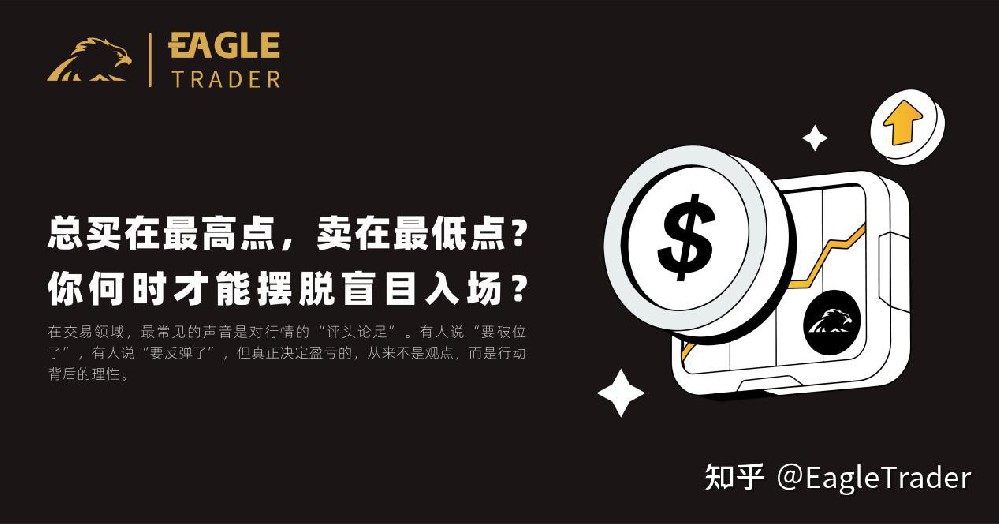Always buy at the highest point and sell at the lowest point? When can you get rid of blind entry?
- 2025年11月5日
- Posted by: Eagletrader
- Category: News
In the trading field, the most common voice is “commentary” on the market. Some people say “the position is about to break”, and some say “it is about to rebound”, but what really determines profit and loss is never the perspective, but the rationality behind the action.
When the market fluctuates, the people who are most easily influenced by emotions are not prices, but people. The difference between a professional trader and ordinary retail investors often lies in whether he has thought clearly about “why” before making a move.

The fog of blind entry
Many traders like to buy lows at support levels and chase highs when breakthroughs occur. But the problem is that they often have no confirmation signal and no risk control logic. They are just emotionally driven by the rise and fall of prices, so they place orders impulsively.
This is a typical “blind entry”. And blindness does not lie in “moving quickly”, but in “absence of thinking”. Some people will retort: ”Is it wrong to plan in advance? Entering the market before the market breaks out may also be an opportunity for higher profits.”
This is indeed the case. But the premise is that you truly understand the operating logic of the market. If the layout is based on system and experience, it is called prediction; if it is just emotionally driven and vague feeling, it is gambling.
The trap of “worthless transactions”
The most direct criterion for judging whether a transaction is worth doing is: whether the risk is proportional to the profit.
If you don’t even have a reasonable stop-loss space when placing an order; if you trade frequently without a clear profit-loss ratio; if you can’t help but want to do something just because “the market is moving” – then this transaction is likely to be “worthless”.
This type of operation may bring occasional small profits, but in the long run, the losses will be greater. What’s even more frightening is that it will destroy your rhythm and mentality, causing you to fall into a vicious cycle of constant remediation and impulsiveness.
There are never many opportunities worth taking action
Most of the time, the market is volatile. Really meaningful opportunities are often hidden in a few clear trends or structures. Those who enter the market frequently and want to increase their profits by “doing it a few more times” usually miss the real big market trend due to continuous small losses.
The wisdom of trading does not lie in “more”, but in “waiting”. Only if you can hold back and not take action shows that you really know how to get along with the market.
“Rational training” to avoid blind entry
1. FormulateTrading plan
Be clear before entering the market: entry conditions, stop loss position, take profit target, profit and loss ratio. If you haven’t thought about these clearly, it means you are not ready yet.
2. Stay calm and disciplined
The market will always make noise, but real traders know how to ignore short-term fluctuations and wait for their own certainty.
3. Understand the market logic
Don’t just look at the K-line, but also understand the market structure, capital logic and participant behavior. Only in this way can we distinguish the “fake moves” behind the price.
4. Pay attention to risk management
Stop loss is not insurance, but the bottom line for survival. Those who can survive in the market for a long time are those who know how to “stop”.
5. Control the trading frequency
Being able to refrain from trading is closer to maturity than operating blindly.
From “reaction” to “judgment”
In EagleTrader’s proprietary trading exam, we see more and more traders learning this shift in thinking – from emotional “reaction” to rational “judgment”.
They experienced real market fluctuations in the exam, and learned how to plan every move under the constraints of rules and risk control.
The habits of frequent operations, chasing ups and downs, have been gradually replaced by systems, discipline and waiting.
For them, the exam is not just an assessment, but also a training on “rationality”.
Blindly entering the market may seem brave, but it is actually another manifestation of fear. Rational trading may seem slow, but it is a combination of control and wisdom.
Remember this sentence: “The real master is not the one who keeps taking action, but the one who knows when to sit still.”
EagleTrader hopes that every trader can find his own rhythm in the rules, and in the real market environment of simulation and assessment, turn rationality into a habit and turn thinking into profits.
